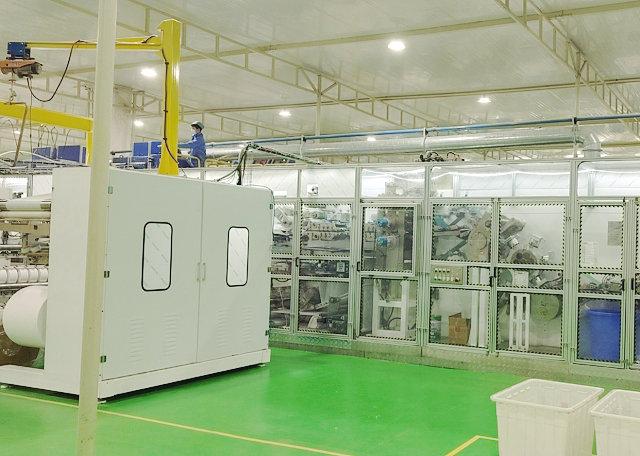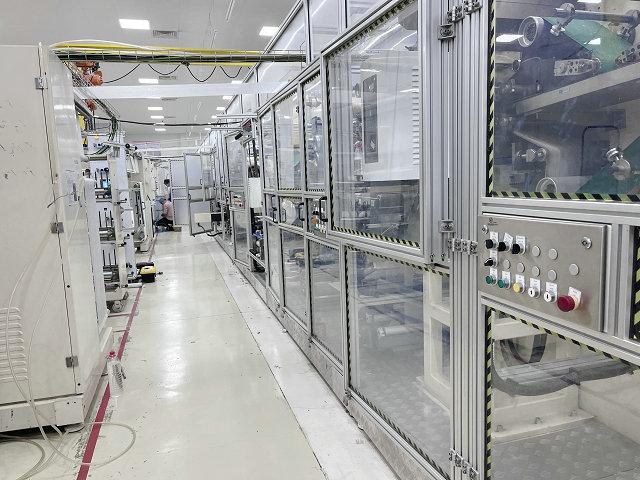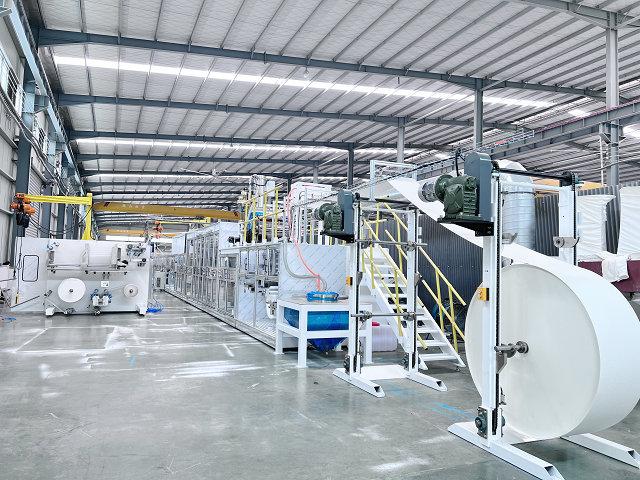Author:Haina Machinery Factory FROM:Diaper Machinery Manufacturer TIME:2024-11-14
Best sanitary pad machines play a crucial role in manufacturing feminine hygiene products, providing essential support to women's health worldwide. However, like any industrial machinery, they encounter several common issues that can impact production efficiency and product quality. Understanding these challenges is important for manufacturers aiming to optimize their operations and ensure the highest standards of hygiene products. This article explores the common issues faced with sanitary pad machines, their causes, and possible solutions.
One of the most frequent problems Best sanitary pad machines encounter is mechanical failure. This can be attributed to various factors, including wear and tear, lack of maintenance, and subpar components. Mechanical failures can lead to unexpected downtime, disrupting production schedules and increasing operational costs. Regular maintenance routines and using high-quality parts can significantly reduce the incidence of mechanical issues, ensuring smooth operation.

The quality of raw materials used in production directly affects the performance of Best sanitary pad machines. Inconsistent or low-quality materials can cause machine jams, production defects, and ultimately, non-compliant products. Manufacturers must conduct thorough quality checks on incoming materials to ensure they meet required specifications. Establishing strong relationships with reliable suppliers can help maintain material quality and consistency.

Human error is an unavoidable aspect of any manufacturing process, and Best sanitary pad machines are no exception. Operators may misconfigure machine settings, overlook safety protocols, or fail to notice warning signals. Providing comprehensive training for machine operators is essential to minimize mistakes. Additionally, implementing user-friendly control systems can help reduce the likelihood of operator errors, leading to smoother operations.
Another common issue faced by Best sanitary pad machines is inefficiency in production processes. This can result from outdated technology, poor workflow design, or insufficient capacity planning. Inefficient processes can lead to increased cycle times and decreased output, ultimately affecting profitability. Conducting regular assessments of production workflows and investing in modern machinery can enhance efficiency and boost overall productivity.

Ensuring consistent product quality is paramount in the sanitary pad manufacturing industry. Quality control challenges often arise due to inadequate testing procedures, lack of standardization, or inconsistent machine performance. Implementing strict quality assurance protocols and utilizing advanced monitoring systems can help identify defects early in the production process. This proactive approach ensures that only high-quality products reach consumers.
Environmental conditions can significantly impact the performance of Best sanitary pad machines. Factors such as humidity, temperature fluctuations, and dust accumulation can affect machine efficiency and product quality. Manufacturers should ensure that production facilities are well-ventilated and climate-controlled to mitigate these issues. Regular cleaning routines can also help maintain optimal machine performance.
Disruptions in the supply chain can pose significant challenges for sanitary pad manufacturers. Delays in raw material delivery, transportation issues, or geopolitical factors can all hinder production processes. Developing contingency plans and diversifying suppliers can help manufacturers navigate these disruptions more effectively, ensuring continuous production flow.
As technology advances rapidly, older sanitary pad machines may become obsolete, leading to inefficiencies and increased maintenance costs. Manufacturers must stay informed about the latest technological developments in the industry. Upgrading equipment and integrating automation solutions can enhance production capabilities and ensure competitiveness in the market.
In conclusion, while Best sanitary pad machines are vital for producing essential hygiene products, they face a range of common issues that can impact their efficiency and effectiveness. From mechanical failures to quality control challenges, understanding these issues is key to maintaining a successful manufacturing operation. By addressing these challenges through regular maintenance, investing in quality materials, and providing adequate training for operators, manufacturers can optimize their processes and ensure high-quality products for consumers. Continuous improvement and adaptation to technological advancements will further enhance the reliability and performance of sanitary pad machines in the ever-evolving market.
